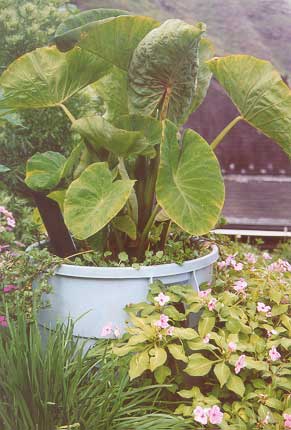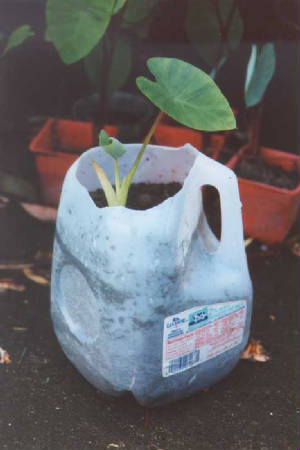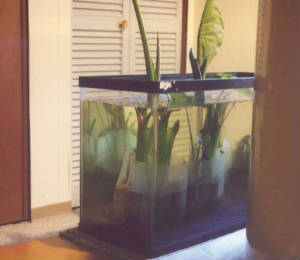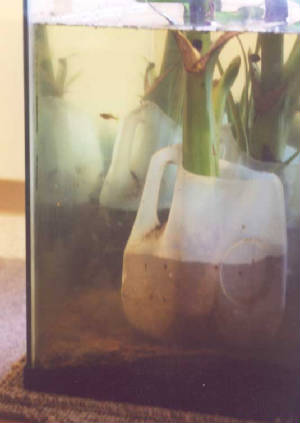|


In the aquarium you can see how brand new plants look. In this
case I am moving my Iowa plants indoors for the winter. As I harvested the outdoor garden, I saved a few young plants, and
put them in dirt, and plopped them into the aquarium straight away. Note each plant has a stem or leaf above the water.
In a closeup of the aquarium you can hopefully see the little
fish. If you do not have fish, you will probably grow mosquitoes.
Also note that the soil is not full. As the roots expand, they will need room. This
also leaves room to add more dirt later, which is a way to keep the plant fresh without transplanting to bigger pot.
|
 |
|
|
|
 |
|
This is my most deluxe setup for growing taro in
water. Our city (Honolulu) switched the trash system to special containers, so I got all the free trashcans I wanted. Inside
the trashcan full of water is a 5-gallon bucket full of dirt and the taro plant. This setup is in the front yard, so I dressed
it up a little with impatiens and other plants.
There are two main advantages to growing taro in
water. First, most weeds cannot live underwater like taro can. (The plants at
the base of the taro are watercress, another water-loving plant.) Second, you don’t have to worry about watering. You
can fill the water up weekly, or even monthly.
Far more common for me is using a milk jug. Milk
jugs are very easy to move and work with.
My water spaces are limited, so generally I get the plants started
like this, and let them grow “dry” (just water with the hose like any other plant) for a few months. Then when
I harvest a plant, this one is ready to drop in. But you can also just go right into the water. The only critical thing is
that the taro plant has something up in the air. Just a cut stem is enough.


|
 |
|
|
|